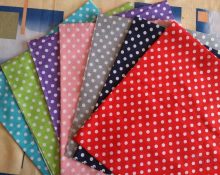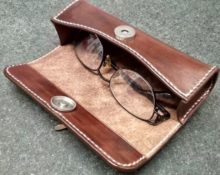
tkani.ua
Proper storage of art materials is of great importance. Quality and durability depend on the location, orderliness and accuracy. It’s not for nothing that every experienced needlewoman knows that every thread and needle should have a box where it will always be returned after use. A neatly laid out tool encourages creativity, but the constant search for the right item, on the contrary, drives you crazy.
Nowadays, organizing the storage of handicrafts is not difficult. There are many special stands, racks, boxes and other things where you can conveniently arrange items.
Organization and storage of handicrafts - 6 tips on how to organize tools
You can organize the storage of sewing goods, small items for knitting and drawing yourself, without buying expensive furniture. Here are some original ideas:
- If there is no separate work room, you can use a closet.It must be completely emptied and equipped with special dividers, hangers, and stands. Different tools should be stored in different compartments.
- It is quite possible to build several shelves with crossbars from wooden beams or boards. A spool of floss will fit perfectly into them, and a babinka will fit into the larger section.
- Convenient sticks of different thicknesses can be nailed near the desktop and hang spools of ribbons, braid, and decorative laces on them.
- You can store pencils, pens, and markers for marking fabrics in tin cans. They are also suitable for knitting accessories.
- A clothing cover with one transparent side is divided into equal squares by a machine line. We cut them at the top, and we get a lot of pockets. We drive a nail into the wall and hang a cover with pockets on hangers.
- To prevent the remains of the floss from getting tangled, we organize their storage using a regular clothespin. We wind the rest of the thread around it and pinch the tip.
Each item can be useful for creating convenient storage space. You can also use plastic bottles, foam sheets, candy containers and more.
Storing fabric rolls - how to properly store fabric

tkani.ua
To ensure that the fabric does not deteriorate and maintains its appearance, it is necessary to store it correctly. Roll storage is the most optimal way to preserve large quantities of material. But for each canvas there are certain conditions:
- Linen materials must be protected from sunlight and cleaned at fifty degrees. Do not iron dry material. Dry only in fresh air. The ideal storage location is a dark, ventilated room.
- Cashmere requires delicate storage. The roll should be small and stored horizontally in a closed box.A canvas paper spacer is needed between several rolls.
- Synthetics do not tolerate temperature fluctuations. Also, the roll should be protected from moisture.
- Knitted rolls should lie horizontally. The room must be ventilated. The material should be protected from the sun, water and all heating equipment.
- Natural cotton fabric, can be stored in any position. The main thing is not to leave the canvas in the open sun or at high temperatures.
- Viscose is wound into large skeins; it is not picky about storage conditions. Exposed sunlight and high humidity can be a problem. It is advisable to let viscose dry on its own after washing.
- Acrylic canvases are not afraid of the sun and water, they are not afraid of moths. It must be stored at temperatures up to 25 degrees.
For most materials, the permissible humidity is 60 degrees. The optimal length of a rolled pipe for fabric at home is fifteen centimeters. You can use special plastic bases or make it yourself from cardboard. Pile-type fabric must be laid so that there are no kinks on it. At the same time, they are wound in accordance with the direction of the fibers.


 0
0





